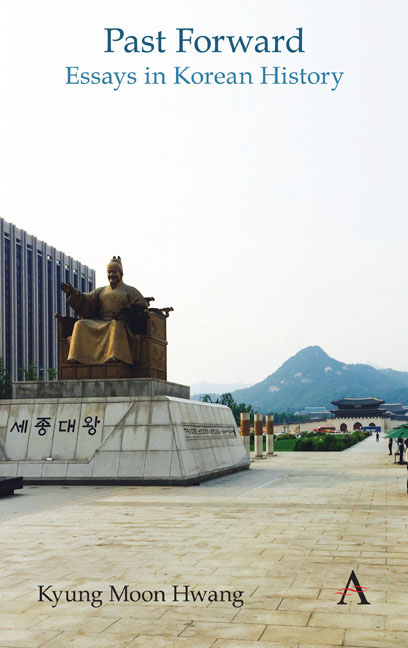Book contents
- Frontmatter
- Contents
- List of Figures
- Foreword
- Chronologies of Korean History
- Themes
- Acknowledgments
- Note on Romanization and Spelling
- Part I Circulating History
- Part II Durable Traditions
- Part III Ancient Remains
- Part IV Dynastic Depths
- Part V Modern Origins
- Part VI Challenges of Nationhood
- Part VII History Makers
- Part VIII External Presences
- 52 Korea's Complicated Relationship with China
- 53 How Chinese was Chinese History?
- 54 Tiananmen and the Power of History
- 55 Lotte between Korea and Japan
- 56 Comfort Women Beholden to History
- 57 A Modest Proposal for Dokdo
- 58 The General Sherman Incident of 1866
- 59 Depictions of the United States
- 60 Overcoming Old Views of Korea–United States Ties
- 61 Foreign Language Dependency
- Part IX Trials of Modernization
- Part X Gripped by the Past
- Index
52 - Korea's Complicated Relationship with China
from Part VIII - External Presences
- Frontmatter
- Contents
- List of Figures
- Foreword
- Chronologies of Korean History
- Themes
- Acknowledgments
- Note on Romanization and Spelling
- Part I Circulating History
- Part II Durable Traditions
- Part III Ancient Remains
- Part IV Dynastic Depths
- Part V Modern Origins
- Part VI Challenges of Nationhood
- Part VII History Makers
- Part VIII External Presences
- 52 Korea's Complicated Relationship with China
- 53 How Chinese was Chinese History?
- 54 Tiananmen and the Power of History
- 55 Lotte between Korea and Japan
- 56 Comfort Women Beholden to History
- 57 A Modest Proposal for Dokdo
- 58 The General Sherman Incident of 1866
- 59 Depictions of the United States
- 60 Overcoming Old Views of Korea–United States Ties
- 61 Foreign Language Dependency
- Part IX Trials of Modernization
- Part X Gripped by the Past
- Index
Summary
Ongoing attempts by the People's Republic of China to smoothen relations with both South and North Korea remind us how complex and problematic these ties have been over the past several decades. But this relationship between the peninsula and the mainland extends back nearly two millennia, to an era when the modern notions of “China” and especially “Korea” did not necessarily apply.
Since then, Korea's relationship with China has been one of “love–hate,” oscillating from close alliance and peaceful cultural exchange to confrontation and bitter rivalry. Indeed, that Korea is still in existence is somewhat of a miracle, given the pressures that eventually extinguished the independent standing of most other smaller civilizations on China's periphery. But this survival, so central to Koreans’ sense of national identity, also depended at times on Chinese assistance, which reinforces the difficulty of passing judgment on China's historical impact on the peninsula.
Without China, there might not have been a need for early polities on the peninsula to cohere into a single state. Korea itself formed, and continually developed thereafter, in opposition to China—a quest to distinguish the peninsula's people and governing order from that of the Middle Kingdom—as much as in emulation. Without question, since earliest times Korea's elites and rulers drew inspiration, models and other cultural features from China, the fount of high civilization. But Chinese attempts to conquer or absorb the peoples of the peninsula generated a fierce resistance that gave birth to Korea itself.
This happened twice in the seventh century, which can be considered the originating era of Korea as a nation-state, or at least as a distinctive civilization and coherent polity. Goguryeo, which began centuries earlier on territory that encompassed today's Manchuria and northern Korea, had to fend off waves of Chinese attempts to pacify and conquer it. The largest such campaign took place, it appears, in 612, by China's Sui dynasty.
Goguryeo successfully beat back the Chinese that time, but it had to endure several more such attacks, and finally it succumbed not to China but rather to an alliance between China and a peninsular rival, Silla. In the mid-seventh century, Silla finally brought resolution to centuries of confrontation between the peninsular states.
- Type
- Chapter
- Information
- Past ForwardEssays in Korean History, pp. 154 - 156Publisher: Anthem PressPrint publication year: 2019



